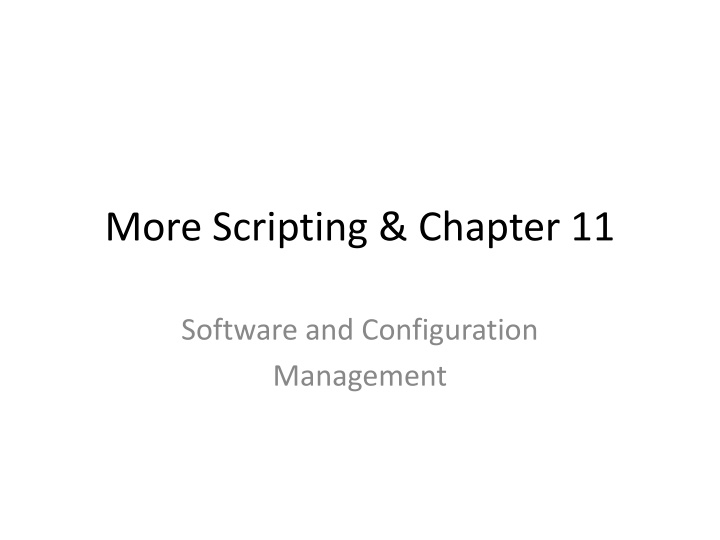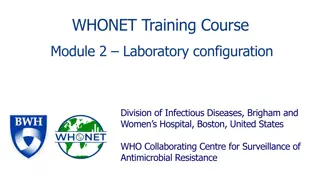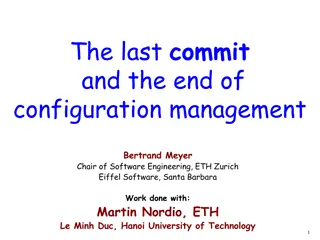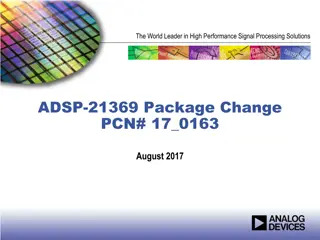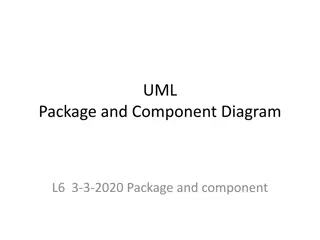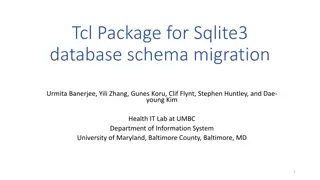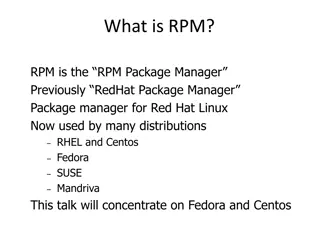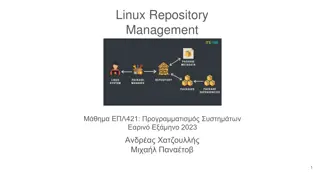Overview of Package Management in Software Configuration
Understanding package management is vital for software installation and configuration. It involves making installation atomic, ensuring dependencies, and utilizing tools like RPM and deb. High-level tools like yum and APT further simplify package management by handling internet-based package searches and upgrades.
Download Presentation

Please find below an Image/Link to download the presentation.
The content on the website is provided AS IS for your information and personal use only. It may not be sold, licensed, or shared on other websites without obtaining consent from the author.If you encounter any issues during the download, it is possible that the publisher has removed the file from their server.
You are allowed to download the files provided on this website for personal or commercial use, subject to the condition that they are used lawfully. All files are the property of their respective owners.
The content on the website is provided AS IS for your information and personal use only. It may not be sold, licensed, or shared on other websites without obtaining consent from the author.
E N D
Presentation Transcript
More Scripting & Chapter 11 Software and Configuration Management
Package Management Packing system make software installation as atomic as possible. If there is an error the package can removed or reapplied Maintains dependencies for other software and libraries 2 common package management systems for Linux are RPM (red hat package manager) and deb (Debian for Ubuntu)
Low Level Package Management Both the RPM and .deb packaging systems now function as dual-layer soup-to-nuts configuration management tools. At the lowest level are the tools that install, uninstall, and query packages. rpm options are --install, --upgrade, --erase, and --query
Low Level Package Management For example, the command rpm --query --all lists the packages installed on the system. # rpm --upgrade openssh-2.9p2-12.i386.rpm error: failed dependencies: openssh = 2.9p2-7 is needed by openssh-askpass-2.9p2-7 openssh = 2.9p2-7 is needed by openssh-askpass-gnome-2.9p2-7 openssh = 2.9p2-7 is needed by openssh-clients-2.9p2-7 openssh = 2.9p2-7 is needed by openssh-server-2.9p2-7
Where to find RPMs? Below is the list of rpm sites, where you can find and download all RPM packages. http://rpmfind.net http://www.redhat.com http://freshrpms.net/ http://rpm.pbone.net/
Low Level Package Management # rpm --query --whatrequires openssh openssh-askpass-2.9p2-7 openssh-askpass-gnome-2.9p2-7 openssh-clients-2.9p2-7 openssh-server-2.9p2-7 If you list multiple RPMs on the command line, rpm sorts them by dependency before installation. # rpm --upgrade openssh-*
High Level Package Management There are tools that know how to find packages on the Internet, analyze inter-package dependencies, and upgrade all the packages on a system. yum, the Yellowdog Updater, Modified, works with the RPM system. The Red Hat Network is specific to Red Hat Enterprise Linux and uses RPM. The Advanced Package Tool (APT) originated in the .deb universe but works well with both .deb and RPM packages
Package Management To simplify the task of locating and downloading packages To automate the process of updating or upgrading systems To facilitate the management of inter-package dependencies Red Hat Network (commercial) Yum (Red Hat, Fedora, CentOS) Apt-get (debian / ubuntu)
Package Management Concepts Release the baseline, the target, snapshot of software package A component is a subset of the software within a release with core software blessed by the distributor and extra software made available by the broader community. An architecture represents a specific class of hardware. Repositories
Package Repositories Linux distributors maintain software repositories that work hand-in-hand with their chosen package management systems. The default configuration for the package management system usually points to one or more well-known web or FTP servers that are under the distributor s control.
YUM YUM (Yellowdog Updater Modified) 1. Install a Package with YUM
1. Install a Package with YUM yum -y install firefox (force)
7. YUM Updating System Check for Available Updates using Yum To find how many of installed packages on your system have updates available, to check use the following command. # yum check-update Update System using Yum To keep your system up-to-date with all security and binary package updates, run the following command. It will install all latest patches and security updates to your system. # yum update
8. List all Enabled and Disabled Yum Repositories The following command will display all enabled and disabled yum repositories on the system. # yum repolist all Install a Package from Specific Repository To install a particular package from a specific enabled or disabled repository, you must use --enablerepo option in your yum command. For example to Install PhpMyAdmin 3.5.2 package, just execute the command. # yum --enablerepo=epel install
At Home Exercises 1) Find all files in your home directory which has read permission only to group AND for each file change its group permissions to r-x (read and execute) [try it by chaining commands together using -exec option for find] 2)How would you recognize a process that is hogging resources? Assume that the process needs to be killed. What signal would you send, and why? What if you needed to guarantee that the process died? 3)What is the difference between hard links and symbolic (soft) links? When is it appropriate to use one or the other? Give an example of creating a hard link between two files.
